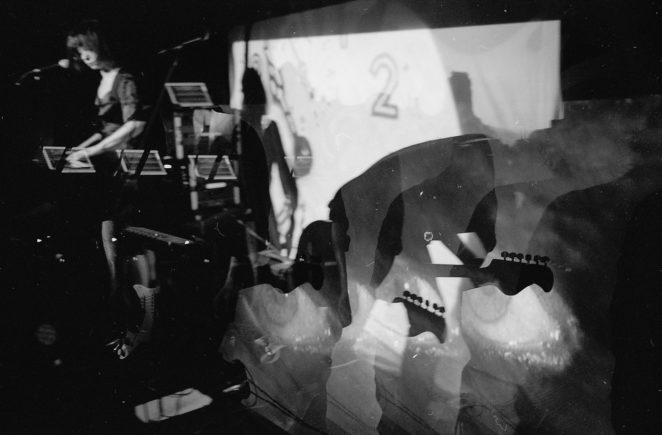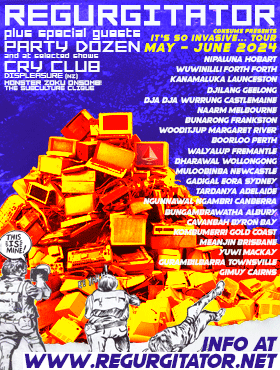
Dream Dali is Aldous Emerson (lead vocals and guitar), Rene Huxley (key bass and keys) and William Hobbes (drums), a trio of experienced musicians who have played for artists such as Vera Blue, Daniel Johns, Kite String Tangle and Miami Horror, and supporting the likes of Phoenix, Washed Out and Empire of the Sun.
The Dream Dali sound blends reverbed guitars with droning synths and hypnotic drums into a modern blend of dark-wave psychedelia. Morphing the experimental tones of Neu!, Liquid Liquid with the darkness of The Doors and The Cure, Dream Dali’s debut release ‘Hurt Me’ hypnotised listeners into a profound trance with floating melodies and dark latent ideas, Having toured intensely with previous projects internationally, Dream Dali are no strangers to the stage. Blending Dada movies with black and white imagery from the 1930’s, their live show has been described as an experience in surrealism that is unique and enchanting.
Lead vocalist and guitarist Aldous Emerson was kind enough to talk us through how Dream Dali bring their unique sound to the stage. Over to you Aldous …
We have worked hard to incorporate our black and white aesthetic and a technological aspect into our live setup. We wanted to be able to create a world of surrealism that was easy to set up and also do things that may be challenging with a band that isn’t synced to DAW.
I used Ableton Live for everything. I run tracks that can’t be played, Keys and keys bass plug ins and patch changes, vocals effects, VDMX (visual program) midi information and DMX midi information along with patch changes to my Boss GT 100 effects unit.
Having all the instruments run through Ableton allow us to monitor our sound without fold backs or wedges. Each of us has a control to turn up each instrument in our ears, using faders on the keyboard and a Korg nano kontrol for myself and the drummer. I also use the Nano Kontrol to launch songs.

When a song is launched I have a channel purely for patch changes for my GT 100 guitar effects unit. This means I can do things such as switch effects on and off, have tempo synced or do trippy things like have a guitar go from normal to reverse smoothly. (See photo below) The guitar is split to an amp for a live sound and also inputs into Ableton for monitoring guitar.

We use a midi keyboard that plays the bass and synths parts, by splitting the keyboard. Our keyboardist can also use the faders to change level for In Ear monitors. All are labelled with glow in the dark tape. (see photo below). Having this control over in ears means we don’t have issues with sound checks with monitors and can feel instantly comfortable.

I use a Behringer sound card with 10 outputs so the mixer has control over the tracks and also so we have channels available for our in ears. From the sound card an individual loom is given to each member for quick set up.
For the visual side of the show, I have gathered lots of black and white dada and surrealist footage that looks really original as they didn’t have digital effects, so there is a great texture and feeling to the films. All are cut to be in tempo to emphasis the music and put into a video program called VDMX. I have a midi channel in Ableton that is routed to VDMX to tell it to begin the video when I launch the song.
We have three lights (see photo) that are positioned behind each member and programmed to be in sync with the music. We only use white light so the black and white aesthetic is kept. I use a midi channel in Ableton to program the lights, which is outputted to a lighting app for Mac. Then from the app I use a USB to DMX (lighting language) convertor.

All this takes a lot of preparation but my favourite thing is to think of a concept and see it come to fruition. Plus when we play it’s fun to be in another world!
I work on getting musicians from the studio to the stage, so feel free to say hi if you want to talk more!
Dream Dali recently released a new single “Little Lights” which they supported with live shows and a special appearance at BIGSOUND. The clip for Little Lights pays homage to the groups’ namesake Salvador Dali, with its use of found Dadaist clips to reflect the eerie, supernatural vibe of the song.


